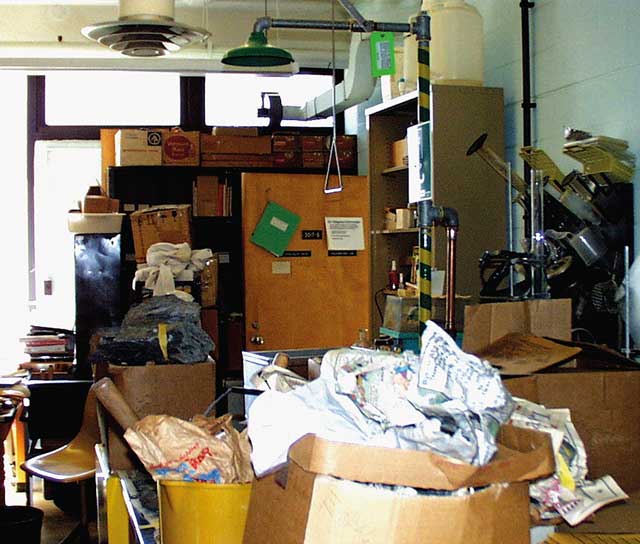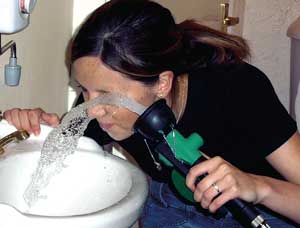
Making sure your emergency safety showers and eyebaths are ready to withstand the winter freeze is essential, says Janet Waine, managing director of Aqua Safety Showers International.
Where the safety of personnel is concerned, just installing a piece of safety equipment is not enough. Testing for uninterrupted operation and functioning of both internal and external safety showers is vital. Not doing so can put workers’ lives in danger.
Emergency eyewash and safety shower units must be installed in work areas where there is high potential for accidents involving corrosive, irritant or toxic substance. If you have a working environment where there is a possibility a worker could be covered with a substantial amount of contaminant, you will need a safety shower facility. That can be either a tank-fed shower unit or a simple pipe shower, plumbed into the mains. Where the spillage is likely to be small, you will probably just need an eye bath and body nozzle.

These critical pieces of health and safety equipment very often slip through regular maintenance duties. During cold weather this can leave the equipment inoperable and liable to long term damage. A planned winterisation programme that includes annual servicing and freeze protection will prevent downtime and costly repair bills, and will also provide peace of mind that the showers and eyebaths will operate perfectly when needed.
Such a plan should include a full report that records the operation of safety showers in accordance with the relevant standards, ANSI Z358.1-2014 and BS EN ISO 41001:2018, covering shower flow rates, water temperatures, location and expectations of the organisation and its workers.

In-house inspection programmes must include updating your risk assessments not only for the control of substances hazardous to health (COSHH) but also for climatic conditions, the surrounding environment and the workforce, including lone workers, and the mix of male and female staff. If processes and site layouts change operationally you need to reconsider the type of decontamination solution that meets the needs of the workers and their working environment.
To make sure casualties can use the shower for the recommended 15 minutes minimum (to ensure chemicals are thoroughly washed off) the water must be tepid, as cold water directly from the mains will cause casualties to stop using the shower too soon because of thermal shock.
And are you sure your employees can remember where the emergency facilities are located? It could be time-critical that they are aware that a facility is in the direct vicinity, ideally no more than the recommended 10 seconds travel time away, as every second counts for an injured person. This also reduces further spread of the contamination.
Pathways should not be obstructed or items stored on top of an eyewash sink. Ensure that the pathway is well lit and has clear directional signs in place.
Operatives need to be fully briefed on the potential danger of the hazards where they are working, understand exposure limits and know what to do to decontaminate clothing and the body. They need to be trained on how to operate the shower.
Finally, and most importantly, employers must make it clear who is responsible for carrying out inspection, weekly testing, recording and maintenance. A tagging process must be instituted whereby workers themselves can check that an emergency shower has been properly tested and report anything they believe to be unsafe.
For more information visit
www.safetyshowersinternational.com
or call +44 (0) 1942 318096

